Instruction
The 6 Actions of the Wrists and Forearms
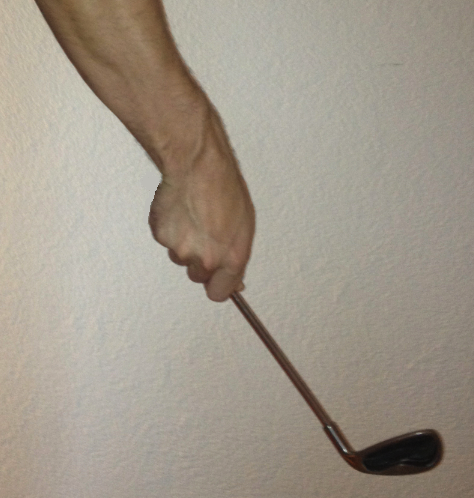
Before I became a professional golfer, I was a computer engineer and before that I went to college to be a pharmacist.
Little did I know at the time that the pharmaceutical courses I took covering physics, anatomy, physiology, kinesiology, etc., would serve me well in my golf career as far as understanding things like angular momentum, pendular motion, coil springs, lever types, joint functions, etc.
In this article I want to spend a little time going over six actions of the wrists and forearms and then discussing how those actions can affect the golf club.
Medically speaking, the six actions are pronation versus supination, radial deviation versus ulnar deviation and palmar flexion versus dorsiflexion.
Now for the big questions — what do those actions mean in simpler terms, what effect do they have on the golf club and what are some pros and cons of one versus another?
Supination is the rotation of the hand and forearm (not to be confused with rotating from the shoulder socket) so the palm faces upward. The mnemonic I use to remember this one is to rotate the palm up to hold soup in it.
Pronation is the opposite rotation of the hand and forearm (also not to be confused with rotating from the shoulder socket) so the palm faces downward. This action would pour the soup out of the palm.
In golf terms, these are often expressed by telling someone to roll the wrists over through impact.
Another analogy that you may have come across that has the same rolling effect is to shake someone’s hand on the backswing (which rolls the club open) and then to do the same on the opposite side of the through swing (which rolls the club back over).
Pronation and supination are very commonly taught. One reason why some instructors teach these hand actions is that they say speed can be added to the club head. While it can be argued that this is true in that the toe of the club would be moving faster through the hitting zone than the heel, hitting the ball consistently straight becomes much more difficult because the club face is constantly pointing to a different spot when you pronate and supinate.
Also, the extra club head speed may not even correlate to more ball speed. Despite impact happening in approximately 1/2000th of a second, that’s still enough time for a club with a high rate of rotation to have a glancing impact blow (the center of gravity of the club probably wouldn’t be driving directly through the center of gravity of the ball) and adversely affect the shot.
That being said, there are no doubt many PGA Tour players that use this type of hand action through the impact area. However, most that do it have likely been doing it for a long time and they also practice and play more than the majority of people. Rolling can work, but it’s also a type of action that I would consider to be high maintenance and these type of players can be streaky.
If you are struggling to hit the ball straight and have unpredictable and inconsistent curvature, I would look to minimize the amount of rotation you are using in your swing, especially through the hitting area.
Be careful when looking at club-face rotation in your swing to not confuse it with the club-face rotation that can come from the ball and socket joints in your shoulders. In my observation, that has a tendency to happen in the back swing from people that pull their lead arm well across their chest and conversely when the trailing arm gets pulled well across the chest in to the follow through.
On the flip side of wrist rolling, perhaps you have also heard of counter-rotating the club on the back swing. This action wouldn’t have the same level of directional problems with the club face as rolling and I would definitely advocate it to my students over rolling. However, it is still a level of manipulation that may or may not be worth doing.
Ulnar and radial deviation are also fairly common. Ulnar deviation is a bending of the wrist toward the pinky. I remember ulnar deviation by thinking that the pinky is under the thumb when I grip the club.
Radial deviation is the opposite bending of the wrist towards the thumb.
Golf-wise, you may hear of radial deviation referred to as cocking and ulnar deviation as uncocking.
These hand actions are often used together with pronating and supinating. For example, someone might say:
“Rotate the club open on the way back and cock it upwards on the back swing. On the way down, uncock the club, roll it over through impact, and re-cock it in the follow through.”
That’s all four actions being used.
Using radial and ulnar deviation by themselves aren’t all that bad. For one thing, there aren’t the directional and timing problems that come with the wrist rolling of pronation and supination. But personally, assuming a neutral grip position at setup, for some reason I find radial deviation difficult to conceptualize and I lose sense of where the club is in the back swing. However, with a stronger grip (where I turn my lead hand clockwise around the grip as per my vantage point), radial deviation with my lead hand in the back swing works great for me.
Lastly, palmar flexion is a bending of the palm towards the forearm or inside of the wrist. I think of this one as flex the palm.
Conversely, dorsiflexion is the bending of the back of the hand towards the forearm away from the inside of the wrist.
Palmar flexion is sometimes referred to in golf as having a bowed wrist, where as dorsiflexion would be having a cupped wrist.
A related taboo golf term for these hand actions through impact would be flipping. Although, in many cases I don’t think flipping is so much a problem with the hand and wrist action as it is an inactive lower body. If you look closely at swings of various Tour players and golfers like Graeme McDowell, Dustin Johnson, Vijay Singh or Mike Austin you’ll see some hit, slap or flip in all of their swings as they move through the hitting area. It’s just that they’re not stalling with their lower bodies.
I would characterize players that flip as golfers who might generate more spin and who could be high-ball hitters depending on some other variables.
Like ulnar and radial deviation, it’s also nice that palmar and dorsiflexion don’t have the directional problems associated with the club face as when pronating and supinating. Some might argue that palmar and dorsiflexion will cause trajectory problems, but I don’t think this is always the case assuming you swing in a pendular fashion. If you don’t try to over-control the pendulum, gravity can take care of getting the club face back to the same place every time. Besides, on average, there is more of a full-swing problem with directional ball flight control than distance control. Palmar and dorsiflexion can be a good choice for having directional control.
Assuming that each of the six actions has a neutral position, that’s 27 different combinations per wrist/forearm not counting the degrees of variation between all of the positions.
Depending on where you start your wrists and hands at setup, there are certainly a lot of different things you can do throughout the entirety of the swing, each with their own pros and cons.
This may be a lot to take in, so here are a few final summary comments and general suggestions that you might consider, at least for the part of the swing when the club is coming through the hitting zone.
- Excessive rolling through impact can be inconsistent for controlling shot curvature. Sometimes rollers will try to play only a draw or only a fade because they will likely have the most difficult time controlling the accuracy and precision of their shot curvature. Not that there’s anything wrong with it, but certain swing styles and teaching methods have come about that focus more on hitting only a draw or only a fade versus learning to hit straight.
- Despite the taboo term, a flipping action can give you more spin, shot height and pop on the ball presuming your lower body isn’t stalling and possibly some other variables. Mike Austin, the man who hit a Guinness World Record 515-yard drive in the U.S. National Senior Open, is a good example of this. Austin hit the ball really far, high and was all carry. Unfortunately, he wasn’t a good putter (he three-putted for bogey on the par-4 he hit the 515-yard drive) but that’s another story.
- Going from a cupped-lead hand position at the top of your back swing and bowing through impact will probably spin the ball the least (some guys do it well but I have a hard time doing this).
- Having a non-wrist action can be good for pitching or where you need consistency and control of direction and trajectory but not power. Steve Stricker uses a little bit of rotation during his swings and pitches, which I wouldn’t advocate, but other than that he’s a pretty good example of the success of relatively passive hands and wrists.
- LIKE113
- LEGIT15
- WOW16
- LOL3
- IDHT2
- FLOP8
- OB2
- SHANK15
Instruction
The Wedge Guy: The easiest-to-learn golf basic

My golf learning began with this simple fact – if you don’t have a fundamentally sound hold on the golf club, it is practically impossible for your body to execute a fundamentally sound golf swing. I’m still a big believer that the golf swing is much easier to execute if you begin with the proper hold on the club.
As you might imagine, I come into contact with hundreds of golfers of all skill levels. And it is very rare to see a good player with a bad hold on the golf club. There are some exceptions, for sure, but they are very few and very far between, and they typically have beat so many balls with their poor grip that they’ve found a way to work around it.
The reality of biophysics is that the body moves only in certain ways – and the particulars of the way you hold the golf club can totally prevent a sound swing motion that allows the club to release properly through the impact zone. The wonderful thing is that anyone can learn how to put a fundamentally sound hold on the golf club, and you can practice it anywhere your hands are not otherwise engaged, like watching TV or just sitting and relaxing.
Whether you prefer an overlap, interlock or full-finger (not baseball!) grip on the club, the same fundamentals apply. Here are the major grip faults I see most often, in the order of the frequency:
Mis-aligned hands
By this I mean that the palms of the two hands are not parallel to each other. Too many golfers have a weak left hand and strong right, or vice versa. The easiest way to learn how to hold the club with your palms aligned properly is to grip a plain wooden ruler or yardstick. It forces the hands to align properly and shows you how that feels. If you grip and re-grip a yardstick several times, then grip a club, you’ll see that the learning curve is almost immediate.
The position of the grip in the upper/left hand
I also observe many golfers who have the butt of the grip too far into the heel pad of the upper hand (the left hand for right-handed players). It’s amazing how much easier it is to release the club through the ball if even 1/4-1/2″ of the butt is beyond the left heel pad. Try this yourself to see what I mean. Swing the club freely with just your left hand and notice the difference in its release from when you hold it at the end of the grip, versus gripping down even a half inch.
To help you really understand how this works, go to the range and hit shots with your five-iron gripped down a full inch to make the club the same length as your seven-iron. You will probably see an amazing shot shape difference, and likely not see as much distance loss as you would expect.
Too much lower (right) hand on the club
It seems like almost all golfers of 8-10 handicap or higher have the club too far into the palm of the lower hand, because that feels “good” if you are trying to control the path of the clubhead to the ball. But the golf swing is not an effort to hit at the ball – it is a swing of the club. The proper hold on the club has the grip underneath the pad at the base of the fingers. This will likely feel “weak” to you — like you cannot control the club like that. EXACTLY. You should not be trying to control the club with your lower/master hand.
Gripping too tightly
Nearly all golfers hold the club too tightly, which tenses up the forearms and prevents a proper release of the club through impact. In order for the club to move back and through properly, you must feel that the club is controlled by the last three fingers of the upper hand, and the middle two fingers of the lower hand. If you engage your thumbs and forefingers in “holding” the club, the result will almost always be a grip that is too tight. Try this for yourself. Hold the club in your upper hand only, and squeeze firmly with just the last three fingers, with the forefinger and thumb off the club entirely. You have good control, but your forearms are not tense. Then begin to squeeze down with your thumb and forefinger and observe the tensing of the entire forearm. This is the way we are made, so the key to preventing tenseness in the arms is to hold the club very lightly with the “pinchers” — the thumbs and forefingers.
So, those are what I believe are the four fundamentals of a good grip. Anyone can learn them in their home or office very quickly. There is no easier way to improve your ball striking consistency and add distance than giving more attention to the way you hold the golf club.
More from the Wedge Guy
- The Wedge Guy: Golf mastery begins with your wedge game
- The Wedge Guy: Why golf is 20 times harder than brain surgery
- The Wedge Guy: Musings on the golf ball rollback
- LIKE84
- LEGIT13
- WOW5
- LOL1
- IDHT0
- FLOP4
- OB1
- SHANK8
Instruction
Clement: Stop ripping off your swing with this drill!

Not the dreaded headcover under the armpit drill! As if your body is defective and can’t function by itself! Have you seen how incredible the human machine is with all the incredible feats of agility all kinds of athletes are accomplishing? You think your body is so defective (the good Lord is laughing his head off at you) that it needs a headcover tucked under the armpit so you can swing like T-Rex?
- LIKE0
- LEGIT2
- WOW2
- LOL0
- IDHT0
- FLOP0
- OB0
- SHANK2
Instruction
How a towel can fix your golf swing

This is a classic drill that has been used for decades. However, the world of marketed training aids has grown so much during that time that this simple practice has been virtually forgotten. Because why teach people how to play golf using everyday items when you can create and sell a product that reinforces the same thing? Nevertheless, I am here to give you helpful advice without running to the nearest Edwin Watts or adding something to your Amazon cart.
For the “scoring clubs,” having a solid connection between the arms and body during the swing, especially through impact, is paramount to creating long-lasting consistency. And keeping that connection throughout the swing helps rotate the shoulders more to generate more power to help you hit it farther. So, how does this drill work, and what will your game benefit from it? Well, let’s get into it.
Setup
You can use this for basic chip shots up to complete swings. I use this with every club in my bag, up to a 9 or 8-iron. It’s natural to create incrementally more separation between the arms and body as you progress up the set. So doing this with a high iron or a wood is not recommended.
While you set up to hit a ball, simply tuck the towel underneath both armpits. The length of the towel will determine how tight it will be across your chest but don’t make it so loose that it gets in the way of your vision. After both sides are tucked, make some focused swings, keeping both arms firmly connected to the body during the backswing and follow through. (Note: It’s normal to lose connection on your lead arm during your finishing pose.) When you’re ready, put a ball in the way of those swings and get to work.

Get a Better Shoulder Turn
Many of us struggle to have proper shoulder rotation in our golf swing, especially during long layoffs. Making a swing that is all arms and no shoulders is a surefire way to have less control with wedges and less distance with full swings. Notice how I can get in a similar-looking position in both 60° wedge photos. However, one is weak and uncontrollable, while the other is strong and connected. One allows me to use my larger muscles to create my swing, and one doesn’t. The follow-through is another critical point where having a good connection, as well as solid shoulder rotation, is a must. This drill is great for those who tend to have a “chicken wing” form in their lead arm, which happens when it becomes separated from the body through impact.
In full swings, getting your shoulders to rotate in your golf swing is a great way to reinforce proper weight distribution. If your swing is all arms, it’s much harder to get your weight to naturally shift to the inside part of your trail foot in the backswing. Sure, you could make the mistake of “sliding” to get weight on your back foot, but that doesn’t fix the issue. You must turn into your trial leg to generate power. Additionally, look at the difference in separation between my hands and my head in the 8-iron examples. The green picture has more separation and has my hands lower. This will help me lessen my angle of attack and make it easier to hit the inside part of the golf ball, rather than the over-the-top move that the other picture produces.


Stay Better Connected in the Backswing
When you don’t keep everything in your upper body working as one, getting to a good spot at the top of your swing is very hard to do. It would take impeccable timing along with great hand-eye coordination to hit quality shots with any sort of regularity if the arms are working separately from the body.
Notice in the red pictures of both my 60-degree wedge and 8-iron how high my hands are and the fact you can clearly see my shoulder through the gap in my arms. That has happened because the right arm, just above my elbow, has become totally disconnected from my body. That separation causes me to lift my hands as well as lose some of the extension in my left arm. This has been corrected in the green pictures by using this drill to reinforce that connection. It will also make you focus on keeping the lead arm close to your body as well. Because the moment either one loses that relationship, the towel falls.


Conclusion
I have been diligent this year in finding a few drills that target some of the issues that plague my golf game; either by simply forgetting fundamental things or by coming to terms with the faults that have bitten me my whole career. I have found that having a few drills to fall back on to reinforce certain feelings helps me find my game a little easier, and the “towel drill” is most definitely one of them.
- LIKE12
- LEGIT2
- WOW2
- LOL0
- IDHT0
- FLOP2
- OB0
- SHANK8
-

 19th Hole6 days ago
19th Hole6 days agoDave Portnoy places monstrous outright bet for the 2024 Masters
-

 19th Hole2 weeks ago
19th Hole2 weeks agoThings got heated at the Houston Open between Tony Finau and Alejandro Tosti. Here’s why
-

 19th Hole7 days ago
19th Hole7 days agoTiger Woods arrives at 2024 Masters equipped with a putter that may surprise you
-

 19th Hole2 weeks ago
19th Hole2 weeks agoReport: Tiger Woods has ‘eliminated sex’ in preparation for the 2024 Masters
-

 19th Hole1 day ago
19th Hole1 day agoTwo star names reportedly blanked Jon Rahm all week at the Masters
-

 19th Hole2 weeks ago
19th Hole2 weeks agoAddiction, spinal fusion, and scam artists – Everything Anthony Kim revealed in candid interview with David Feherty
-

 19th Hole2 weeks ago
19th Hole2 weeks agoAnthony Kim says doctors told him that he ‘may not have much time left’ ahead of LIV return
-
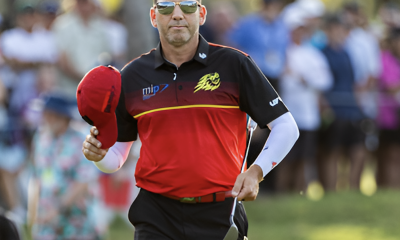
 19th Hole1 week ago
19th Hole1 week agoBrooks Koepka and Sergio Garcia make significant equipment changes as 2024 Masters looms

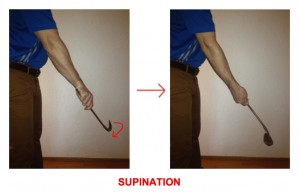
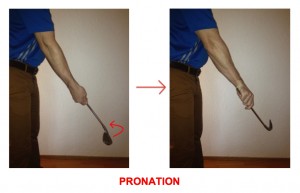

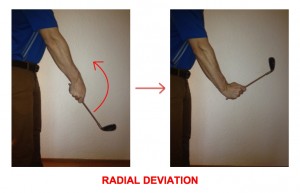
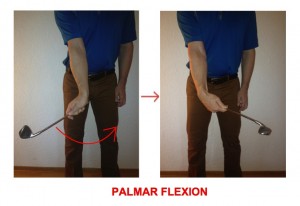
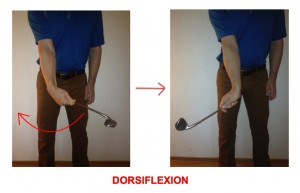
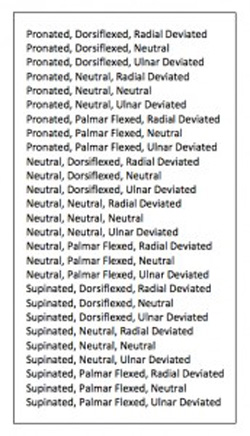

















justin
Jun 26, 2013 at 6:30 pm
great article jaacob. I damaged my socket joints on my left shoulder and left elbow when i was younger and i tend to stop releasing making me go straight right or flipping it over to compensate. Due to this problem i spin the ball too much on every club. i even have my club speed about 108-110(driver) and i only produce about 155-158 ball speed. i feel like i’m losing speed at impact do to this problem. what would you recommend me to try?
Jaacob Bowden
Jul 6, 2013 at 5:20 pm
Thanks, Justin.
The mean smash factor on Tour is about 1.481 or 1.482. So with 108-110 club head speed, getting in the 159-163 range should be doable for you assuming you play a normal lofted driver by Tour standards (the higher the loft on a club the lower the smash factor and less ball speed you get and vice versa).
It sounds like you are either not hitting the sweet spot very consistently (I’m guessing you’d mostly be between 1.409 to 1.473), perhaps you are using a driver with too much loft, or maybe your club head could be somewhat unstable due to how you are moving the club through impact.
How is your ball striking? Impact tape or some foot powder can help you see where you are hitting on the club face.
What kind of spin do you have on the driver? What’s the exact driver loft? Know your launch angle? Perhaps less loft on your driver would help but whether or not I would recommend changng that partially depends on your launch conditions among other things.
Beyond that, it’s a bit difficult for me to say without seeing some video of you.
If you’ve got some and can get the info I was asking about above, feel free to shoot me an email through one of my websites and we can go through it.
viper
Mar 19, 2013 at 9:40 am
Jaacob do you think the Joe Dante’s early wrist cock is consider palmar flexion?
Jaacob Bowden
Jul 6, 2013 at 5:32 pm
Hi Viper, I don’t have my “Four Magic Moves” book handy, so I’m going by memory…but if I remember correctly, yes, it would be left hand palmar flexion and right hand dorsiflexion for a right handed golfer assuming a setup grip where the palms basically face one another.
joaquin
Mar 11, 2013 at 12:46 am
I’m trying to limit myself to one swing thought. 6 actions NOT to do and thats the wrist alone? Oh my. So what do I do now?
Jaacob Bowden
Mar 12, 2013 at 5:25 am
Hi Joaquin, yeah, some people like to get in to the nitty-gritty of what you can do and what is possible. Especially for teachers, this can be good.
But it’s not always necessary or ideal for everyone. In the end, in particular when it’s time to play, I think it’s better to get rid of swing thoughts or limit yourself down to just one or maybe two.
What do you currently think of? Does it work well for you?
If you want some assistance feel free to shoot me an email through my website. I’d be glad to try to help.
Oeystein Ikdahl
Feb 6, 2013 at 9:32 pm
How important would each of these be for distance, and how actively are the long hitters using their hands/forearms? I cant imagine you can hit a 380yds shot with “dead hands”?
Jaacob Bowden
Feb 7, 2013 at 8:07 am
That’s another good question and also one worth further research.
With 27 different positions each wrist could be in at any given point (not counting all the spots in-between each of them), that’s a lot of combinations to compare and contrast.
I agree with you that the dead hands one wouldn’t be the most powerful. It’s definitely not something I would recommend for a long drive competitor. Although, I would say it’s incredibly consistent for regular golf. For pitching (or maybe if you only ever play short and tight courses) it’s worth a look.
As an example, when I first turned Pro, I had become a long hitter and I played a bomb and gouge strategy. But during one several month stretch, for the sake of experimentation, I tried playing the straight, short, and safe strategy and used nothing but dead hands all the way around the course.
One of the tournaments was on a relatively short course by Tour standards. I shot 71-68 to make the cut. Hehe, I remember someone saying I was boring to play with because I was always hitting fairways and greens. But then the next tournament was at one of the longer tour courses I’ve played. I hit pretty consistent and straight again but I just couldn’t compete on the longer course because I was always so far back in the fairway for my approaches and I wasn’t reaching any par 5’s in two.
So the gist of that is, yes, the dead hands one isn’t the most powerful, but it does have advantages.
To your other questions…in my observation, to be a long hitter you simply have to use your forearms/wrists in at least some fashion to take advantage of them as an additional point of leverage and speed generation.
But, like you ask, which one (or combination of more than one) is best for distance?
Since I haven’t sat down and exhausted every single possibility, I can’t say for absolute certainty what’s optimal for distance. There’s also the added complications to consider of club face control (as opposed to just swinging a plain old stick), transfer of energy in to ball speed from impact dynamics, finding something that you can conceptualize and repeat, working with what you naturally do, etc.
That said, here are some thoughts…
I don’t think pronating and/or supinating through the hitting zone is a good idea. Since those cause a rotating club face, controlling where you hit the shot becomes much more difficult. Plus, as I mentioned in the article, an overly rotating club face won’t have as quality of a strike and you could lose power on average. That’s not to say you couldn’t use pronation and supination elsewhere in the swing. I just wouldn’t intentionally do it anywhere through impact.
Perhaps putting together all six could generate the most club head speed. Consider a rear-hand submarine throwing motion. Assuming you start out at setup in a neutral rear-hand position, in the back swing you could dorsiflect, pronate, and radial deviate (basically winding up to throw). The downswing would start with supinating and ulnar deviating back to neutral (starting to build momentum by unwinding)…followed by palmar flexion through impact (taking the momentum buildup and transitioning in to slapping or throwing).
I’ve hit as far as anything else doing that, but on the downside I’m a little inconsistent with that sequence. For some reason I lose a bit of club awareness during the windup.
Presently, the thing that I’m doing that I feel like is giving me the greatest blend of accurate and controllable power is this…
At setup I start with a fairly neutral lead hand grip. Although, if you were to look at me face-on it would look like a strong grip because my natural and relaxed wrist position is a little bit strong looking, plus my arm gets rotated a little bit from the shoulder socket when I put my arm up over my chest. So even though the grip has a strong look, it’s actually a neutral wrist position for me.
On a side note, I think a neutral grip is a good general start for the setup…for a couple reasons. First, swinging with as little tension as possible is important for distance. You’ll hear a lot of long drivers talk about that. Think of it like opening a door that has a rusty hinge. You use a lot of energy muscling the door open, but it’s much more efficient and the door can move faster if you oil it up and let it move freely.
Second, there’s a lot of centrifugal force (outward pull) when you swing the club…so why fight or try to control it? Sort of like a tether ball, just let the ball pull the rope out. Don’t try to control the length of the rope. It’ll come around to the same spot on the other side on it’s own.
Last, muscles that are shortened or stretched will tend to go back to a neutral spot anyway when relaxed. So just make it easier and start out in a neutral spot because if you don’t try to control it you’ll just get pulled back there at impact anyway.
From there all I do is just ulnar deviate in the back swing (which with the stronger setup gives me an overly “closed” looking club face at the top)…and radial deviate back to impact. Very simple, basically just a chopping lead hand motion. I don’t even really have to try to control it because the momentum of my back swing will set my wrist cock naturally.
After impact, to avoid injury, my shoulder socket rotates my lead arm slightly so that I can then dorsiflect with the lead wrist and also ulnar deviate.
As for the trail hand, I start out fairly neutral, dorsiflect in the back swing and palmar flex to impact (basically a slap), have a slight bit of rotation of the arm in the shoulder socket after impact, which leads in to some ulnar deviation. For me, it’s a simple and natural motion that I can do with a nice level of consistency, accuracy, and power (what you were asking about) that I can control.
It’d be a big project, but at some point I think it’d be cool to look at a large sampling of both long drivers and also tour players to see what they are doing with their wrists/forearms and look for patterns…and then to contemplate all the sequencing possibilities in general to see if perhaps there are better ways to do it that people aren’t doing or being taught.
Oeystein Ikdahl
Feb 14, 2013 at 11:38 pm
Hi Jaacob, – thank you for the elaborate reply – much appreciated.
It seems to me that the swing you are describing is a bit similar to what another long hitting golfer, Jamie Sadlowski, is doing although his grip is from what I can tell very strong. I believe in line with with your description that a fairly simple swing, where you can utilize Radial/Ulnar deviation with limited other complicating movements, can increase swingspeed.
When I try this I can fairly easily add 5 mph on the radar – but most of the time I end up with a bad push slice due to pulling the club through with an open clubface. (Maybe that is suggesting that I am supinating unconsciously in the backswing and not pronating again in the downswing? – hmmmm – have to check that) Its a tough game 🙂
Jaacob Bowden
Feb 15, 2013 at 3:40 pm
Sure thing, glad to help.
I’d be curious to know if Jamie’s strong looking grip is coming from a turning in his shoulder socket or in his wrist. A little difficult to tell from just looking at video…but yes, good observation.
I think with my hand action I actually fall a bit between where Jamie is…and Ryan Palmer. If I were still competing in long drive I would probably utilize my hands more like Jamie. But for regular golf, it’s more like towards Ryan’s end of the spectrum with a slightly stifled hand action. I cock a little bit more with my lead hand than Ryan at the top of the back swing, but other than that it’s really similar.
Search for him on YouTube and notice how simple his back swing and downswing hand action is…really low maintenance. I like it a lot because it’s relatively simple to conceptualize, easy to repeat, and I don’t have to worry as much about the timing problems from pronating and supinating (he does pronate/supinate eventually, but it occurs a foot and a half or so after impact).
Flynn Kavanagh
Feb 6, 2013 at 12:30 am
Interesting – Just wondering if any of these wrist/hand moves done excessively would contribute to injury i.e golfers elbow?
Jaacob Bowden
Feb 7, 2013 at 5:43 am
Hmmm, that’s a good question, I don’t know. This would make for a good research project.
None of the moves in and of themselves would cause you to get hurt…but certainly any human movement done excessively could cause injury and my guess is that there would be better and worse combinations of these movements. For example, perhaps it is good to transition from one movement to another from impact to finish as a way of braking the club and spreading out the strain of stopping the club on any one part of the body.
A site that I find rather interesting that you might look at is RacquetResearch.com. It’s a tennis site and the racquet data is over 10 years old, but the science and research I think is still applicable towards golf.
Some of the things I actually read there about tennis elbow made me change some things in my golf game…using bigger grips, heavier shafts, vibration dampeners, and trying to employ more of a semi-sweeping swing rather than a digging one (I’ve hurt my wrists before from taking repeated divots and/or striking the driving range mats too hard and too often).
Flynn
Feb 7, 2013 at 11:02 pm
Yeah golfer’s elbow is definitely a perplexing (and frustrating) injury for me, appreciate the feedback.
Blanco
Feb 18, 2013 at 5:52 pm
I can say that after taking up the game I used an interlocking grip which took me from rare hand/wrist pain associated with my work (writing), to early stage carpal tunnel and advanced tendinitis, all within 10 months or so. It also produced weak ball striking and slicing as I could never fully release the club with my pinky and index finger entwined together. My play with wedges and general touch around the greens was always exceptional however.
Out of necessity I experimented with a ten finger grip and almost immediately dropped 10 strokes off my handicap, because of a newfound ability to play without pain and make true athletic passes at the ball- allowing my hands to turn over through the ball as they would with a ping pong paddle or tennis racket.
Thanks for the article– I always appriciate learning more about the physiology behind the swing.